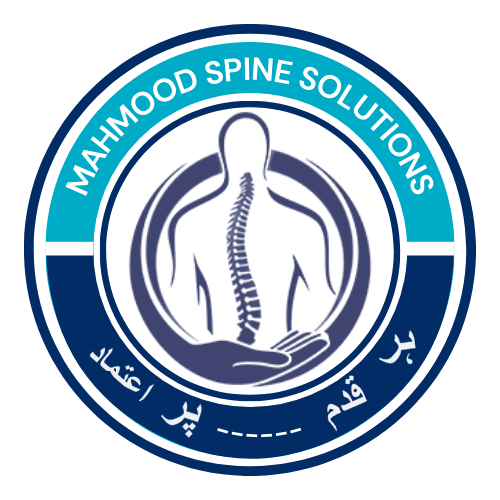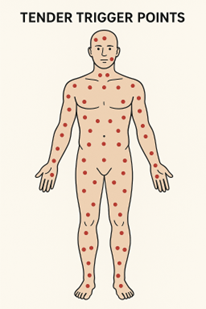Myelopathy disease refers to the dysfunction or damage of the spinal cord. It’s a serious condition that can cause pain, loss of movement, and other neurological symptoms. While myelopathy disease can be alarming, understanding its causes, recognizing its symptoms early, and seeking proper treatment can lead to a better quality of life and even recovery in some cases.
This article will break down what myelopathy disease is, its causes, how it affects the body, available treatment options, and much more. By providing clear, accurate, and actionable information, we hope to empower you with the knowledge to understand and manage myelopathy disease.
What is Myelopathy Disease?
Myelopathy disease occurs when the spinal cord becomes damaged or compressed. The spinal cord is a vital part of the central nervous system, and when it’s injured, it can lead to a range of symptoms. The compression or injury might be caused by various factors, including degenerative disc diseases, herniated discs, spinal stenosis, or trauma.
The symptoms of myelopathy disease depend on the location and severity of the spinal cord compression. It can occur anywhere along the spine, but it is most common in the cervical (neck) region, known as cervical myelopathy. However, myelopathy can also occur in the thoracic (middle) and lumbar (lower) regions.
Causes of Myelopathy Disease
The causes of myelopathy disease are diverse. Understanding these causes is crucial in both preventing and treating the condition effectively. Some of the most common causes of myelopathy include:
- Degenerative Disc Disease: As people age, the discs between the vertebrae in the spine can deteriorate, leading to pressure on the spinal cord. This is a primary cause of myelopathy disease, particularly in the cervical spine.
- Herniated Discs: When a disc in the spine ruptures or bulges, it can press against the spinal cord. This pressure can cause symptoms associated with myelopathy disease, including weakness and numbness.
- Spinal Stenosis: This condition involves the narrowing of the spinal canal, which can compress the spinal cord. It is commonly caused by aging or degenerative conditions such as arthritis, and it is a significant contributor to myelopathy disease.
- Trauma and Injury: Injuries to the spine, such as fractures, can lead to myelopathy disease. The spinal cord may be damaged, leading to both temporary and permanent neurological deficits.
- Tumors and Infections: Tumors, both malignant and benign, as well as infections, can cause compression of the spinal cord and result in myelopathy disease. These require immediate attention from healthcare professionals.
- Congenital Spinal Abnormalities: Some people are born with spinal structural abnormalities that can increase their risk of developing myelopathy disease. These conditions may affect the spine’s alignment and the space available for the spinal cord.
- Other Conditions: In some cases, myelopathy disease may arise from inflammatory conditions, such as rheumatoid arthritis, or from certain genetic conditions that affect the spinal structure.
Symptoms of Myelopathy Disease
The symptoms of myelopathy disease vary depending on the level and severity of spinal cord compression. Early signs might be subtle, but they can become more pronounced as the condition progresses. The most common symptoms of myelopathy disease include:
- Neck or Back Pain: Persistent pain or discomfort in the neck or back can be a warning sign of myelopathy disease. The pain may be accompanied by stiffness or a feeling of tightness.
- Weakness and Numbness: One of the hallmark symptoms of myelopathy disease is weakness or numbness in the arms, legs, or other parts of the body. This occurs because the compressed spinal cord is not able to transmit nerve signals properly.
- Tingling Sensations: A sensation of “pins and needles” or tingling in the hands, feet, or other areas is another common symptom of myelopathy disease. This is caused by nerve compression.
- Balance and Coordination Issues: As myelopathy disease progresses, it can affect your balance and coordination. You may experience difficulty walking, or find yourself frequently tripping or losing your balance.
- Muscle Stiffness and Spasms: People with myelopathy disease may experience muscle stiffness or involuntary muscle spasms, particularly in the arms and legs. This can make movement difficult and painful.
- Bowel and Bladder Dysfunction: In more advanced stages of myelopathy disease, individuals may lose control over their bladder or bowel functions, which can significantly impact their daily life.
- Loss of Fine Motor Skills: Those with myelopathy disease often find it difficult to perform tasks that require fine motor control, such as buttoning a shirt or picking up small objects. This occurs due to weakness and coordination issues in the hands.
How is Myelopathy Disease Diagnosed?
If you suspect that you may have myelopathy disease, it is important to consult a healthcare professional. Early diagnosis can help prevent permanent nerve damage and improve treatment outcomes. To diagnose myelopathy disease, your doctor may use a combination of the following diagnostic methods:
- Physical Examination: A thorough physical exam helps the doctor evaluate muscle strength, reflexes, and motor control. If the physician suspects myelopathy disease, they may test your coordination and balance.
- Imaging Tests: To confirm the diagnosis, imaging tests like X-rays, MRI (Magnetic Resonance Imaging), and CT (Computed Tomography) scans can help visualize the spinal cord and identify any signs of compression or damage.
- Electromyography (EMG) and Nerve Conduction Studies: These tests assess the electrical activity of muscles and nerves to identify areas of damage. They can help pinpoint the extent and location of the spinal cord injury associated with myelopathy disease.
- Blood Tests: In some cases, blood tests may be used to rule out infections or autoimmune disorders that could be contributing to myelopathy disease.
Treatment Options for Myelopathy Disease
The treatment for myelopathy disease depends on the severity of the condition, the underlying cause, and the specific symptoms. Early treatment can help prevent the progression of the disease, reduce pain, and improve mobility. Treatment options include both non-surgical and surgical approaches.
Non-Surgical Treatments
- Physical Therapy: Physical therapy can play a crucial role in improving strength, flexibility, and balance. It helps individuals with myelopathy disease regain lost function and adapt to their condition.
- Medications: Pain relievers, anti-inflammatory drugs, and muscle relaxants are commonly prescribed to alleviate pain and reduce inflammation caused by myelopathy disease.
- Braces or Supports: In some cases, wearing a neck or back brace can provide support and relieve pressure on the spinal cord. This can help reduce symptoms and prevent further injury.
- Steroid Injections: In more severe cases, corticosteroid injections may be administered to reduce swelling and relieve pressure around the spinal cord.
- Lifestyle Modifications: People with myelopathy disease may be advised to modify their activities to avoid excessive strain on the spine. Regular exercise and maintaining a healthy weight are important for managing the disease.
Surgical Treatments
If non-surgical treatments are ineffective or the myelopathy disease is severe, surgery may be required. Surgical options are aimed at relieving pressure on the spinal cord and stabilizing the spine. Common surgical treatments include:
- Decompression Surgery: This procedure involves removing the source of spinal cord compression, such as a herniated disc, bone spurs, or part of a vertebra. Decompression surgery helps reduce the pressure on the spinal cord.
- Spinal Fusion: In cases of instability, spinal fusion may be performed. This procedure involves fusing two or more vertebrae together to stabilize the spine and prevent further damage.
- Artificial Disc Replacement: In some cases, damaged discs may be replaced with artificial discs to restore function and alleviate pain associated with myelopathy disease.
Prevention and Prognosis
Preventing myelopathy disease involves maintaining good spinal health through proper posture, regular exercise, and avoiding heavy lifting or repetitive movements that put stress on the spine. Regular check-ups with a healthcare provider can help monitor any early signs of spinal issues, which can reduce the risk of developing myelopathy disease.
The prognosis for myelopathy disease depends on the severity of the condition and how quickly treatment is sought. Early intervention can lead to better outcomes, with many people experiencing significant relief and improvement in function. However, if left untreated, myelopathy disease can result in permanent nerve damage, so it’s important to act quickly.
Frequently Asked Questions (FAQs)
Can myelopathy disease be reversed?
In many cases, early intervention can reverse the symptoms or significantly reduce them. However, if the condition has caused permanent damage, it may not be fully reversible.
What causes myelopathy disease?
Myelopathy disease can be caused by a variety of factors, including degenerative disc disease, herniated discs, spinal stenosis, trauma, and certain tumors or infections.
Is surgery always necessary for myelopathy disease?
No, surgery is not always necessary. Non-surgical treatments such as physical therapy and medications are often effective, but surgery may be recommended if the condition is severe or doesn’t improve with conservative treatments.
How long does it take to recover from surgery for myelopathy disease?
Recovery time varies based on the severity of the condition and the type of surgery performed. It may take several weeks to months for full recovery, and physical therapy may be necessary.
Final Thoughts
Myelopathy disease is a serious condition that can have a profound impact on your daily life, but early diagnosis and treatment can help improve outcomes. Whether you opt for non-surgical or surgical treatment, taking action as soon as you notice symptoms is critical. By understanding the causes, recognizing the symptoms, and seeking appropriate care, you can manage myelopathy disease and work toward a better quality of life.




